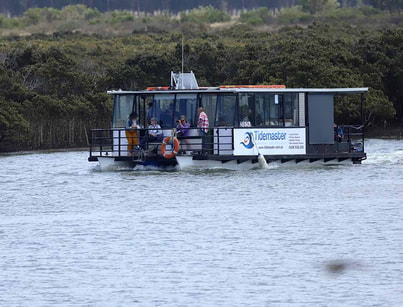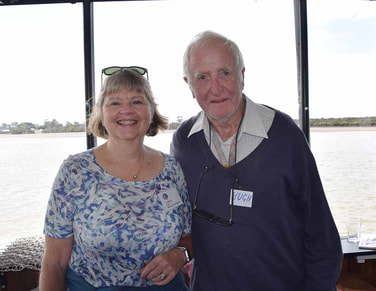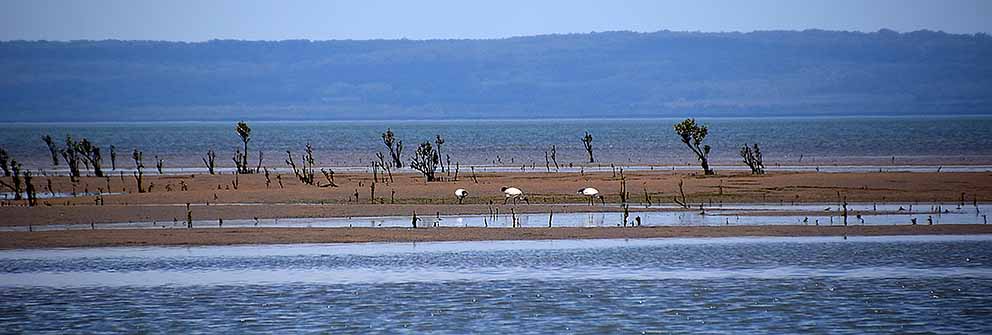
IN A previous life, I passed the Tooradin inlet every day on my long commute to work. I sometimes daydreamed about skipping work and turning left off the highway, towards the old fisherman’s cottage and the BOAT HIRE sign. In my dreams I rowed a small dinghy through the mangrove channels until I reached the bay and was rocked by the gentle waves.
Perhaps it’s just as well I never gave in to temptation. As I found out last month, navigating the Tooradin channels is no job for the blissfully ignorant. At low tide, almost half of Western Port is exposed mud and seagrass. The captain of the Tidemaster remains on full alert as he beats a path for the bay through emerging mudflats.
On board the Tidemaster is a precious cargo: champions, defenders and experts on Western Port, and a few extras like me. Fortunately the collective has been divided into two sailings, so if the boat sinks with all hands, we’ll only lose half of the expertise.
Amidst the sightseeing, birdwatching and morning tea, we hear the latest from the Blue Carbon Lab scientists who are mapping the distribution of blue carbon habitats across the bay. With its wealth of carbon-absorbing marine habitats, including mangroves, tidal and salt marshes, and seagrasses, our bay could play a crucial role in a nature-based solution to climate change.
OzFish uses an underwater drone to show us the seagrass meadows, though today is not a good day as turbidity clouds the view.
 Western Port Biosphere Foundation chair Jo McCoy with Dr Hugh Kirkman
Western Port Biosphere Foundation chair Jo McCoy with Dr Hugh Kirkman We also hear about the challenges ahead in relation to abysmally low rates of survival in mangrove rehabilitation on the eastern side of the bay, around Grantville and Queensferry. Those of us from Bass Coast can only look at the virtual mangrove forests around Tooradin in envy.
As Ian Stevenson of the Western Port Seagrass Partnership says, there’s no real common denominator. What works at the northern end of the bay doesn’t work at the east. Perhaps the winds are too strong, or the tides. What works in one inlet won’t work in another. We are still learning. Our local Landcare crews are experimenting with various planting methods to determine which has the best survival rate.
Earlier Adrian Flynn of Fathom Pacific has tested our general knowledge. “Why is Western Port designated as a biosphere reserve?” Of course everyone on board knows the answer: “Because of the migratory seabirds and waders.”
Heading back to the Tooradin inlet, there’s an “All hands on deck” moment. We are a little aft-heavy and in danger of becoming marooned on a mudflat. The captain politely requests some of his passengers to move fore and a marine disaster is averted.
Some people dream of sailing from San Francisco to Tahiti; others of cruising the Rhine. For me it was a cruise through the Tooradin mangroves.
A final special touch: as we disembark the pelicans briefly look up then resume feasting on the mudflats.
